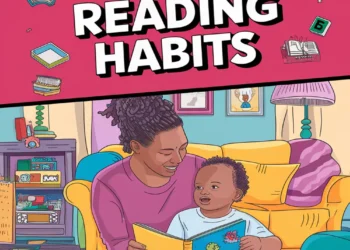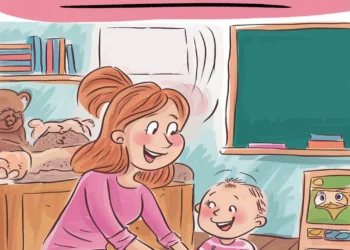Household pets are invaluable for your child’s development, teaching responsibility, empathy, and social skills. Caring for a pet helps kids understand commitment, enhances emotional intelligence, and fosters nurturing behavior. These interactions promote physical activity and encourage imaginative play. Pets also provide unconditional love, boosting your child’s self-esteem and confidence. As your child navigates responsibilities and experiences the joy of companionship, they learn essential life lessons. Discover even more benefits pets bring to your child’s growth and well-being.
Understanding the Bond Between Pets and Children
When you observe a child playing with a pet, it’s clear that their bond goes beyond mere companionship; it fosters emotional and social development. Pets provide children with unconditional love, teaching them about empathy and nurturing. You’ll notice how a child instinctively understands their pet’s moods, often responding with affection or care. This two-way relationship enhances their emotional intelligence, allowing them to express feelings and develop social skills through interaction. Additionally, pets encourage children to communicate, fostering a sense of responsibility and increasing their confidence. These interactions enable children to navigate complex social environments, as they learn patience and cooperative play. Ultimately, this unique bond considerably contributes to their overall emotional well-being and interpersonal skills.
Teaching Responsibility Through Pet Care
The bond between children and pets often leads to invaluable lessons in responsibility. Engaging in pet care helps you teach your child essential life skills that lay the groundwork for future independence. Assigning tasks related to pet care can reinforce accountability and routine.
| Task | Importance | Child’s Learning Outcome |
|---|---|---|
| Feeding the pet | Builds routine | Understanding schedules |
| Walking the dog | Encourages physical activity | Enhancing time management |
| Cleaning the cage | Promotes hygiene awareness | Developing a sense of duty |
Recommended Items
Discover our handpicked suggestions to support your family’s journey—let’s dive in!
Fostering Empathy and Compassion
While many parents recognize the importance of responsibility in pet care, they may overlook how pets can also foster empathy and compassion in children. When kids care for a beloved animal, they learn to notice its feelings and needs, which cultivates their capacity for empathy. For instance, understanding when a pet is anxious or happy allows them to relate to the emotions of others, both human and animal. By comforting a frightened pet or observing its joy during playtime, children begin to grasp the significance of emotional connections. This relational process not only strengthens their bond with their pet but also enhances their ability to empathize with peers, promoting compassionate behavior in other areas of life.
Encouraging Physical Activity and Play
Pets not only nurture empathy but also invite children to engage in physical activity and play. When kids have pets, they find themselves inspired to move more—chasing a ball with a dog or running around with a kitten can lead to hours of joy and exercise. These activities aren’t just fun; they help develop motor skills and promote a healthy lifestyle. Additionally, interacting with pets encourages imaginative play, sparking creativity as children create games or activities together with their furry friends. This physical engagement strengthens muscles and coordination, while the active play enhances overall well-being. By incorporating pets into their daily lives, you’re not just enriching their emotional intelligence but also fostering a love for movement that can last a lifetime.
Enhancing Social Skills and Friendships
When children share their lives with animals, they often discover new ways to build social skills and forge friendships. Interacting with pets encourages empathy and responsibility, as kids learn to recognize and respond to their animals’ needs. These experiences can translate to better relationships with peers, fostering an understanding of others’ feelings. Additionally, pets often serve as social catalysts, providing shared interests that help kids connect with others, whether at the dog park or during playdates. The presence of a pet can ease the anxiety of meeting new friends, creating a comfortable atmosphere for social interaction. Through these dynamics, children not only enhance their communication skills but also foster a sense of belonging, which is crucial for their emotional and social development.
Task Overview for Pet-Inspired Learning
Reducing Stress and Anxiety
Having a furry companion can greatly alleviate your child’s stress and anxiety, creating a calming presence in their lives. Pets offer a unique source of emotional support, helping kids navigate life’s challenges. Here’s how:
- Unconditional love: Pets don’t judge and provide non-threatening affection, which can comfort your child.
- Routine and responsibility: Caring for a pet establishes a sense of routine, giving your child purpose and stability.
- Physical activity: Walking or playing with pets encourages movement, releasing endorphins that reduce stress.
- Social interaction: Pets often facilitate conversations and social interactions, helping your child feel more connected.
Supporting Cognitive Development
While many people may overlook the profound impact pets can have on cognitive development, their presence in a child’s life often fosters essential skills. Engaging with a pet encourages critical thinking and problem-solving. When you watch your child figure out how to care for their furry friend, you see them develop responsibility and empathy. Pets also stimulate imagination; children often create stories or games involving their animals, strengthening narrative skills and creativity. In addition, interacting with pets teaches children about non-verbal communication, enhancing their ability to read emotions and respond appropriately. These experiences allow kids to explore concepts like cause-and-effect in real time, laying a strong foundation for their future academic and social success.
Instilling Routine and Structure
Routine and structure play an essential role in a child’s development, and pets can be key participants in establishing these patterns. When you involve a pet in daily activities, it not only helps create a rhythm but also teaches responsibility. Here are four ways pets contribute to instilling routine and structure:
- Feeding Times: Regular feeding schedules create predictability for both children and pets.
- Walks and Exercise: Setting specific times for walks encourages active habits and shared family time.
- Training Sessions: Consistent training reinforces discipline and focuses attention.
- Grooming Routines: Establishing grooming schedules teaches care and enhances bonding.
Promoting Unconditional Love and Acceptance
When children interact with pets, they often experience a unique form of connection that fosters unconditional love and acceptance. This bond teaches kids that love isn’t conditional on achievements or behavior. Pets provide companionship without judgment, creating a safe space for emotional exploration. As your child cares for their furry friend, they learn empathy, responsibility, and the importance of nurturing relationships. This experience helps them understand that everyone has flaws, yet love remains steadfast. The joy of pet ownership also boosts their mood, reinforcing emotional resilience. Through these interactions, your child gains a deeper understanding of love that extends beyond their pets, enriching their relationships with family and friends, and ultimately contributing to a more compassionate outlook on life.
Developing Communication Skills
How do pets help children express themselves and enhance their communication skills? Pets provide a unique platform for children to articulate their feelings, thoughts, and wants. When interacting with a pet, kids often use a combination of verbal and non-verbal cues, honing their ability to communicate effectively. Here are some key ways pets facilitate this development:
- Encouraging Dialogue: Kids talk to pets as if they’re conversing with friends, practicing conversational skills.
- Teaching Empathy: Understanding a pet’s needs fosters emotional awareness and responsiveness.
- Non-verbal Communication: Observing a pet’s behavior aids children in interpreting body language and emotions.
- Building Vocabulary: Caregiving routines encourage the use of new words related to pets and their care.
Building Confidence and Self-Esteem
Interacting with pets can greatly boost a child’s confidence and self-esteem. When you see your child nurturing an animal, you’re witnessing a powerful bonding experience. Caring for a pet fosters a sense of responsibility, helping your child feel capable and accomplished. Each successful interaction, whether it’s teaching a trick or simply playing, provides a sense of achievement that can translate to other areas of their life.
Pets offer unconditional love and support, allowing your child to express emotions freely without fear of judgment. This safe space encourages them to take risks, knowing they have a steadfast companion by their side. As they take on challenges related to pet care, their self-assurance naturally grows, empowering them to face the world beyond the home.
Creating Lifelong Memories and Connections
Pets play an invaluable role in creating lifelong memories and connections between children and their families. These bonds often shape emotional development and foster a sense of belonging. As you navigate life with your pet, consider how these shared experiences can enhance your child’s growth:
- Shared Adventures: Whether it’s a walk in the park or a game of fetch, every outing becomes a cherished memory.
- Life Lessons: Caring for a pet teaches responsibility and empathy, instilling values that last a lifetime.
- Comfort and Support: Pets can provide emotional support during challenging times, creating a strong foundation for trust.
- Family Traditions: Regular pet care routines can strengthen family ties and create lasting traditions that bring everyone closer.
These experiences greatly enrich your child’s emotional landscape.













